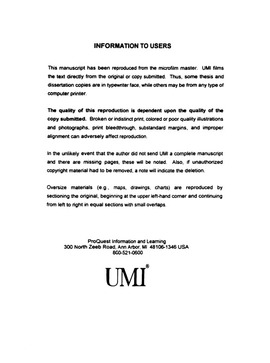| dc.contributor.advisor | Lai, Feng-Chyuan, | en_US |
| dc.contributor.author | Leong, Jik Chang. | en_US |
| dc.date.accessioned | 2013-08-16T12:18:51Z | |
| dc.date.available | 2013-08-16T12:18:51Z | |
| dc.date.issued | 2002 | en_US |
| dc.identifier.uri | https://hdl.handle.net/11244/551 | |
| dc.description.abstract | A finite difference method was employed in part three to obtain the flow and temperature fields in rotating cylinders with a porous sleeve. This configuration is identical to that in the second part, except that the inner cylinder rotates at a constant speed. The results obtained in this part cover all convection regimes. | en_US |
| dc.description.abstract | In the first part, the flow and temperature fields in rotating concentric or slightly eccentric cylinders with a porous sleeve were obtained using a perturbation method with the eccentricity ratio being the perturbation parameter. | en_US |
| dc.description.abstract | Based on these studies, it is concluded that the buoyancy effect promotes convection, but shear effect enhances shear flow and demotes convective flow. The flow strength decreases with the porous sleeve thickness. Consequently, viscous dissipation generates more heat. The permeability of the porous sleeve has the opposite effect of the sleeve thickness. The effect of thermal-conductivity ratio depends on the Rayleigh number. As the annulus becomes eccentric, large velocity and temperature gradients will occur at the narrowest clearance. The overall heat-transfer performance of an annulus with a porous sleeve mainly depends on the Rayleigh and Peclet numbers. The rotation of the inner cylinder delays the onset of natural convection. | en_US |
| dc.description.abstract | The second part deals with weak natural convection in a stationary concentric annulus with a porous sleeve. The inner cylinder is kept at a higher temperature than the outer cylinder. This study was performed using a perturbation method with the Rayleigh number being the perturbation parameter. | en_US |
| dc.description.abstract | This work investigates the flow and temperature distributions in rotating cylinders with a porous sleeve resulting from a combined effect due to shearing and thermal buoyancy. Other effects considered include the eccentricity of the inner cylinder, the permeability of the porous sleeve, its thickness and relative thermal conductivity with respect to the fluid layer. In general, this work consists of four parts. | en_US |
| dc.description.abstract | In the last part, a modified Hele-Shaw cell was used to visualize the flow patterns in a concentric rotating cylinder with a porous sleeve. A shaft was inserted through the Hele-Shaw cell that was filled with 50 cP silicone oil with suspended tracers. | en_US |
| dc.format.extent | xix, 321 leaves : | en_US |
| dc.subject | Cylinders Thermodynamics. | en_US |
| dc.subject | Engineering, Mechanical. | en_US |
| dc.subject | Heat Convection, Natural. | en_US |
| dc.subject | Tribology. | en_US |
| dc.title | Heat transfer and fluid flow in rotating cylinders with a porous sleeve. | en_US |
| dc.type | Thesis | en_US |
| dc.thesis.degree | Ph.D. | en_US |
| dc.thesis.degreeDiscipline | School of Aerospace and Mechanical Engineering | en_US |
| dc.note | Source: Dissertation Abstracts International, Volume: 63-12, Section: B, page: 6059. | en_US |
| dc.note | Major Professor: Feng-Chyuan Lai. | en_US |
| ou.identifier | (UMI)AAI3075333 | en_US |
| ou.group | College of Engineering::School of Aerospace and Mechanical Engineering | |
